A few days in Porto
The village of Afurada
Afurada is, or at least was, a small ocean-fishing village at the river mouth and about half an hour’s walk from the centre and port of Porto. Today its outskirts on the surrounding hilltops are more of a city suburb but around the harbour it retains its fishing and village feel. The fishermen are still there sorting the catch and repairing nets and their boats are still gathered in the harbour.
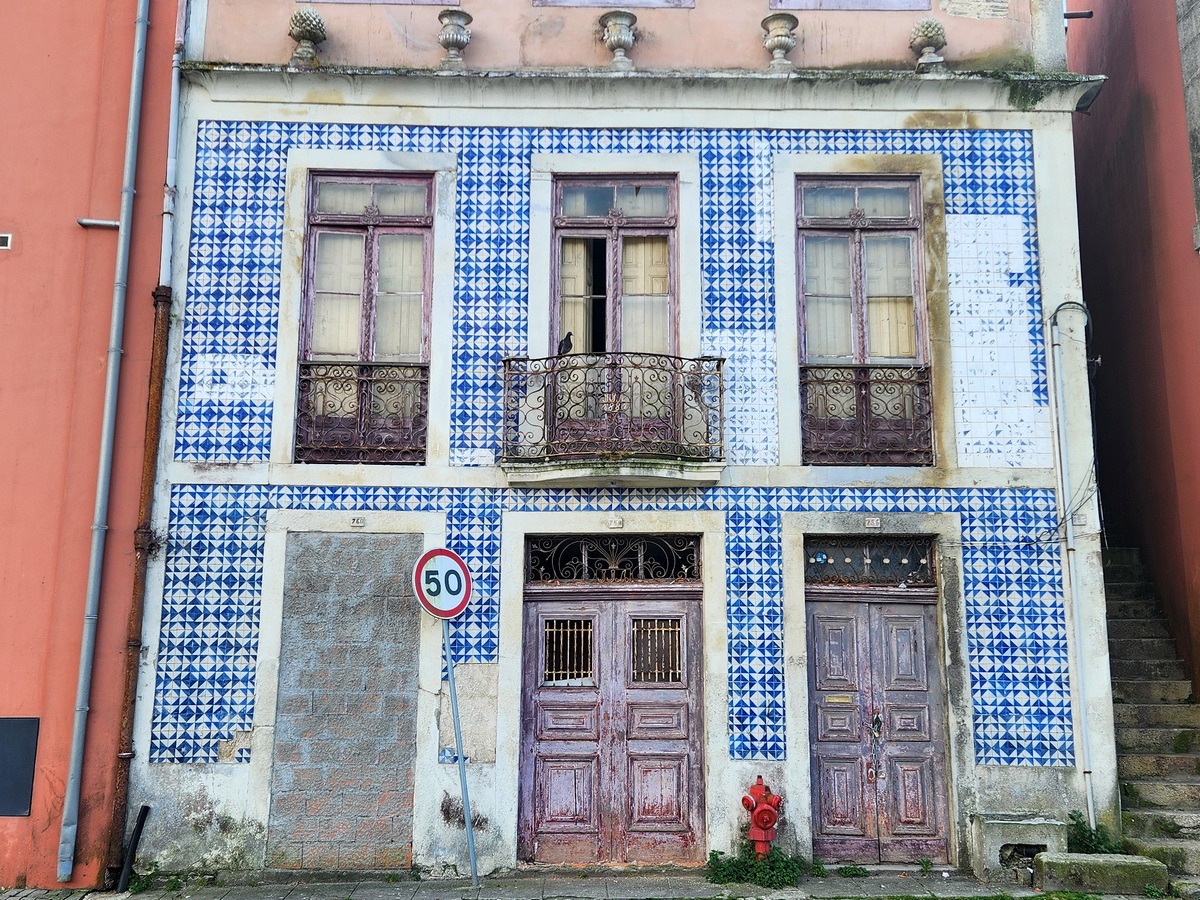
Faded glory along the river Douro.
The streets are narrow and lined, without any breaks, by colourful, tile-fronted homes two or three stories high. At most intersections one or two small bars or restaurants run their tables out into the streets turning one and a half lanes into three quarters of a lane and requiring extreme care on the part of drivers and alertness on the part of diners. In the evenings these restaurants and bars do a lively trade and along the streets residents bring chairs out into the street to relax and chat.
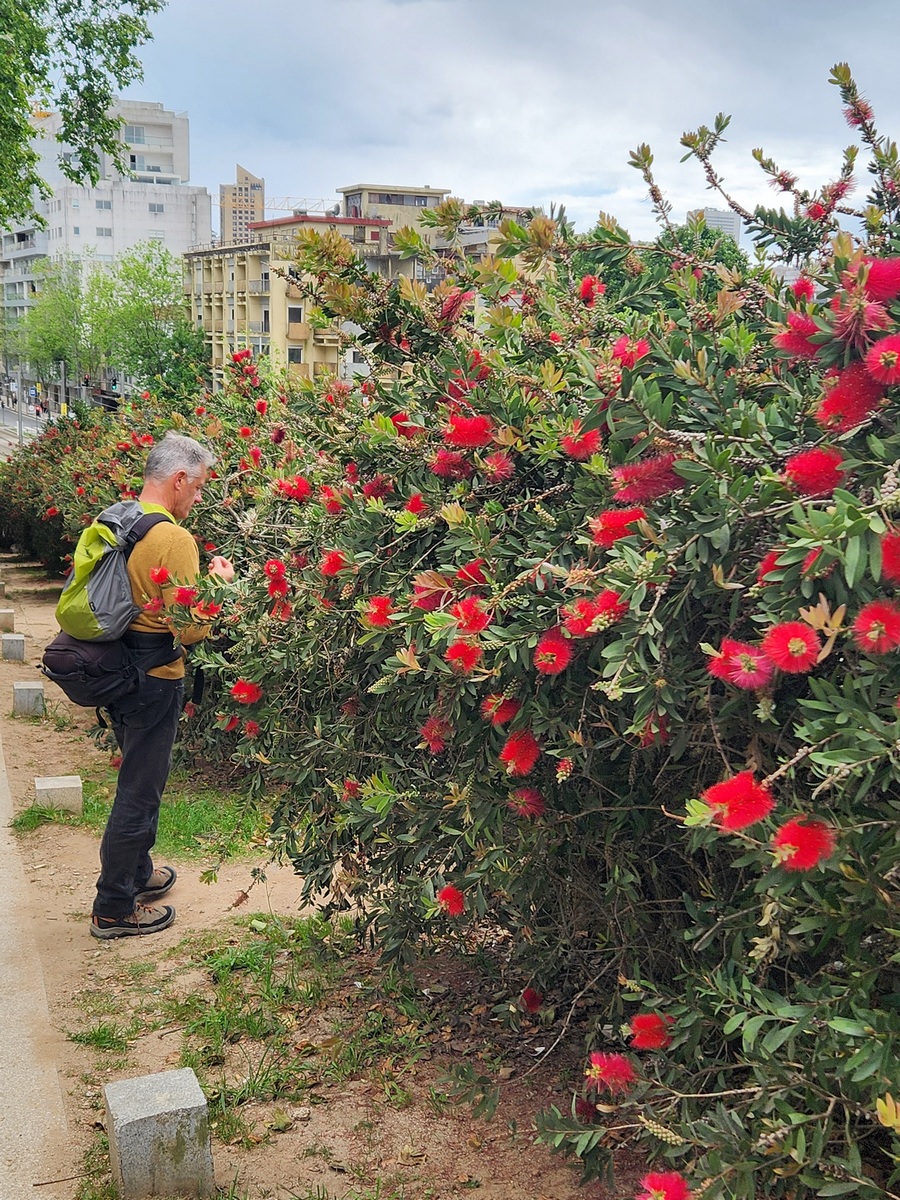
We found some Australian bottlebrushes, in flower. Of course these needed to be inspected and sniffed. Sadly, we did not see a single butterfly or bird on them.
Walking along the Rio Douro
The walk from Afurada to Porto runs along a boardwalk over the river’s edge and up against a slow traffic road. It winds past overgrown cliffs and crumbling, old warehouses, residences and warehouse conversions in a random and endearing sequence.
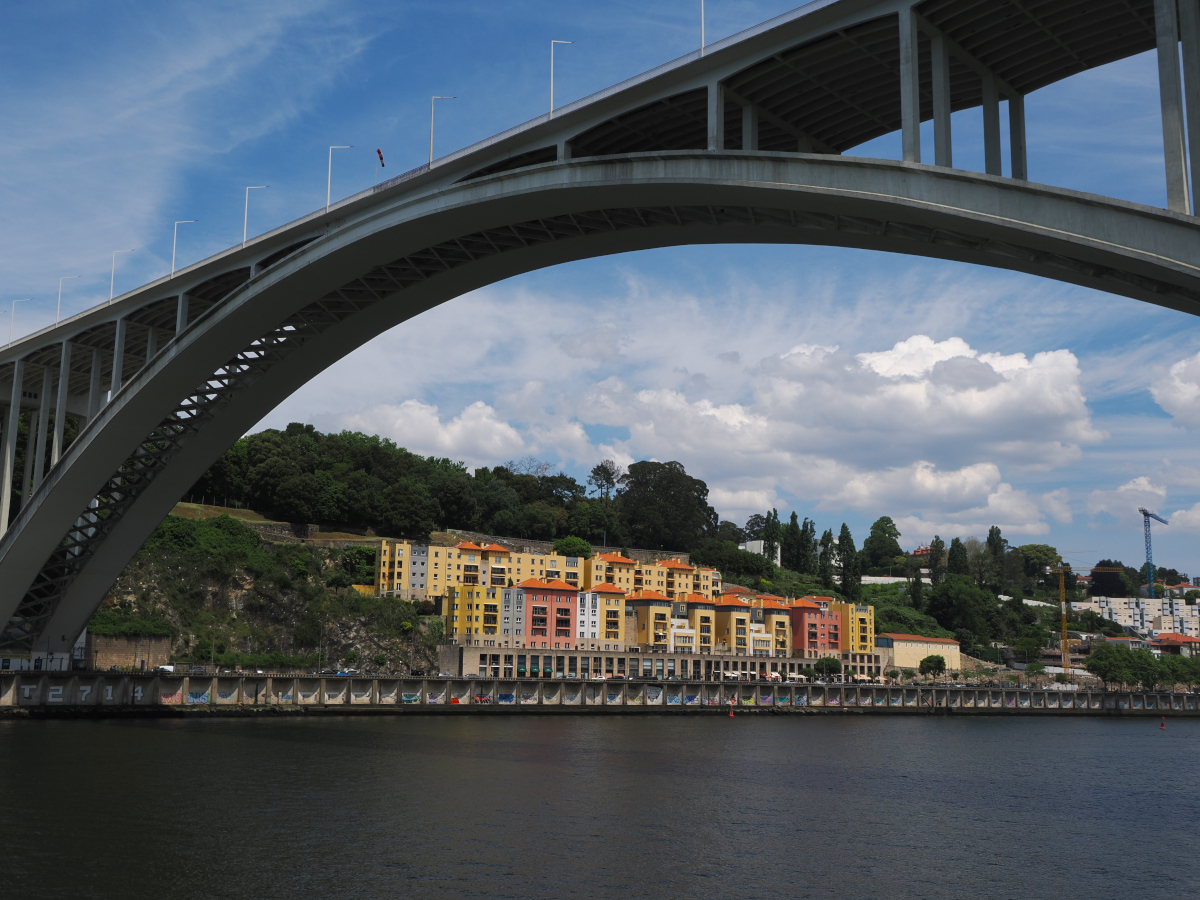
Ponte da Arrábida by day.
About three-quarters of the way along, however, you come to the port wine warehouses. These are one of the foci of Porto’s over-active tourism industry and suddenly everything is busy (that is, extremely busy) and well kept.
Tiled roofs of the Port Houses along the Douro river.
The warehouses and the buildings that front them are nice enough but, at this point of the walk, it is really the view across the river to the old city that is most impressive. There, a tumble of old apartment buildings, some of which date from the 15th Century, clamber up and down the steep hillslopes, their orange tiled roofs competing for the light like so many weeds in a rank garden. It is a truly impressive sight.
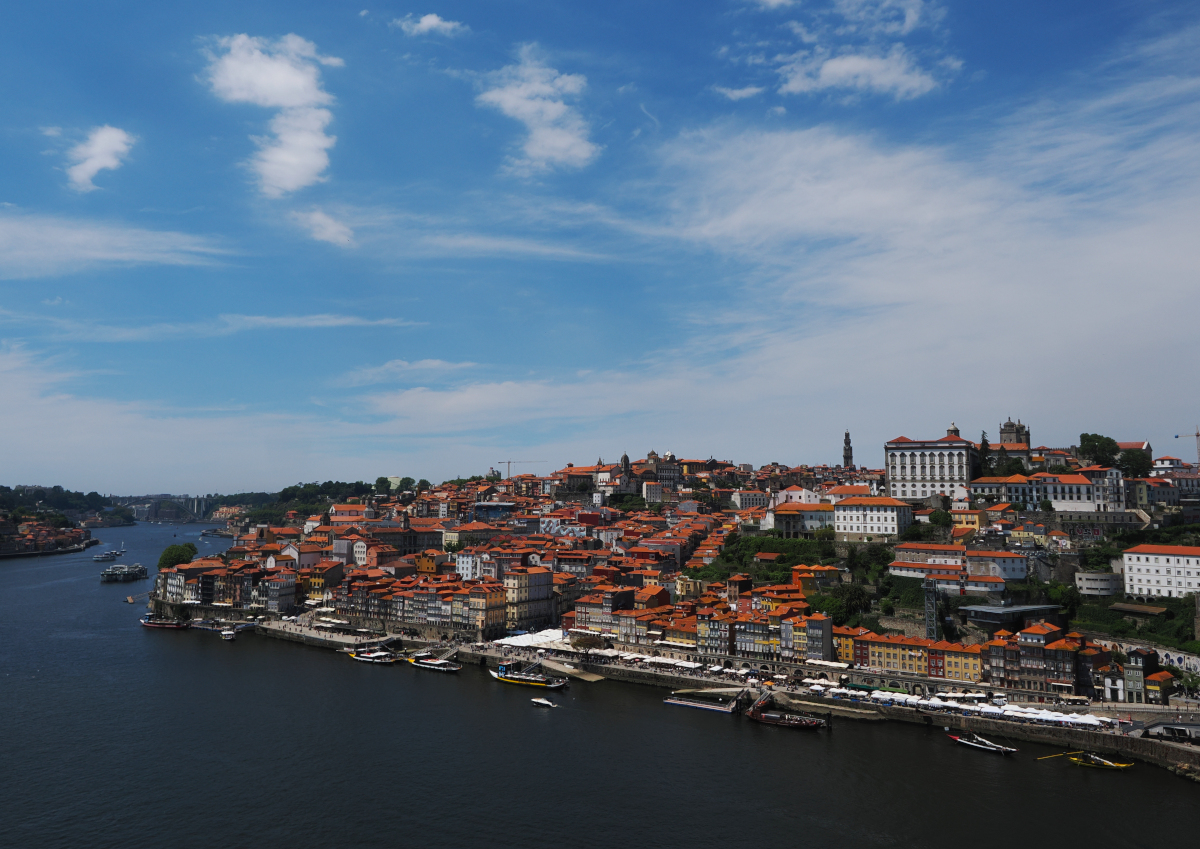
View towards the Ribeira district in Porto.
Our foray into Porto
On our first trip into the old city, we took advantage of the Teleférico de Gaia, a gondola ride, to cut out the climb up to the Dom Luis I bridge (it was hot, we were tired and we hadn’t had an ice cream yet). From the vantage point of the bridge the views are superb.
Views across the Douro river.
Just as superb though, was the fact that, as we came off the bridge on the old city side, we stumbled across the workshop of Porto Guitarra. This is the only remaining workshop where the traditional Fado instruments of Porto are still made and sold.
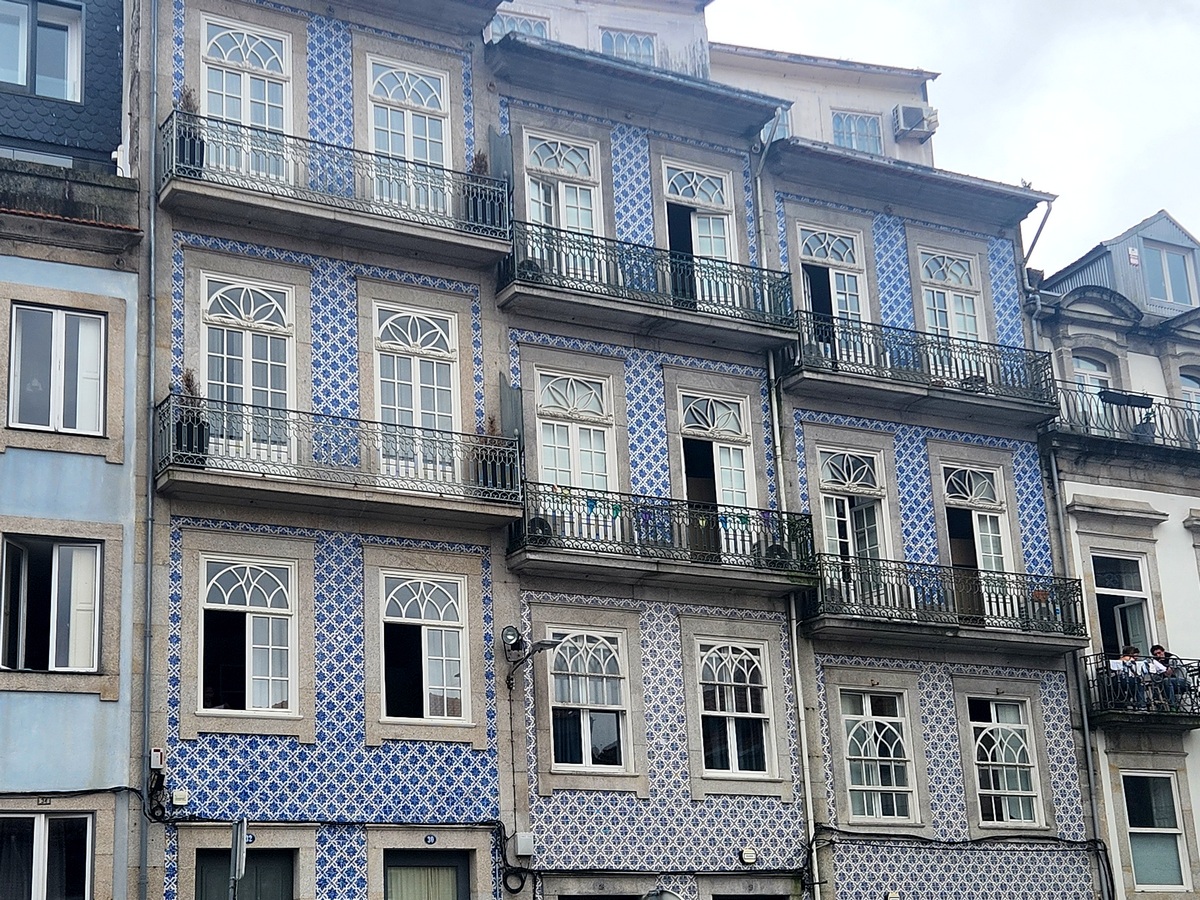
Beautifully tiled houses in the old city centre.
There was a lot of information on instrument making and, along the walls, a host of instruments; some for sale, others to illustrate stages in instrument construction or the methods used.
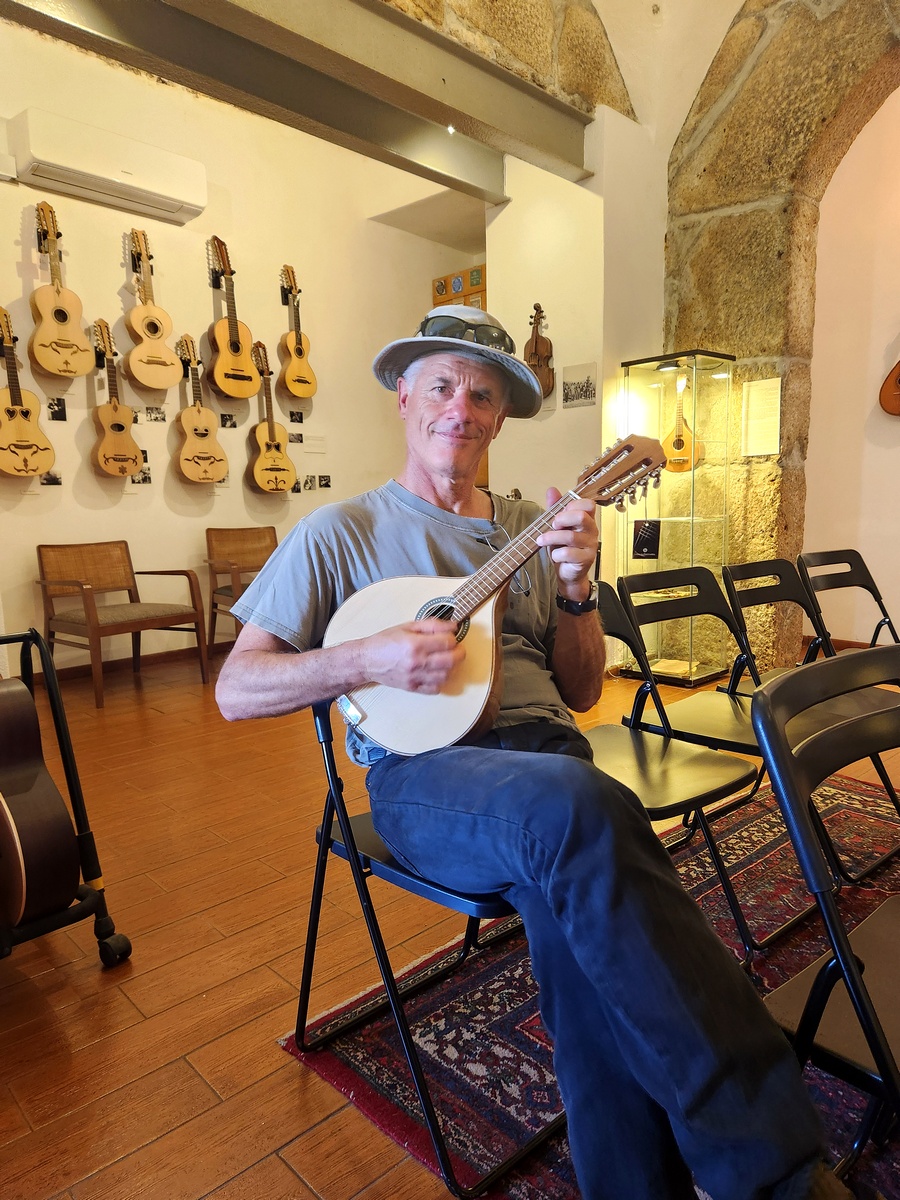
David in his element, playing a bandolim.
There were a host of different types of violas (a sort of 10 string guitar), cavaquinhos (four string thingamyjigs), guitarras (round bodied, 10 string things with Game of Thrones tuning heads), bandoloncelos, bandolas, mandolins, ukeleles, rajãos (a 5 stringed thing that apparently gave rise to the uke), and, of course, given the Brazilian links, bandolims.
More roof- and tile scenery in Ribeira.
These were all very fine instruments and I had the pleasure of playing a lovely bandolim for a while. If we owned a bigger boat I would have been tempted to buy it; it was a thing of great beauty and had a richer sound than my mandolin. Ah well, it was way too nice for my skills.
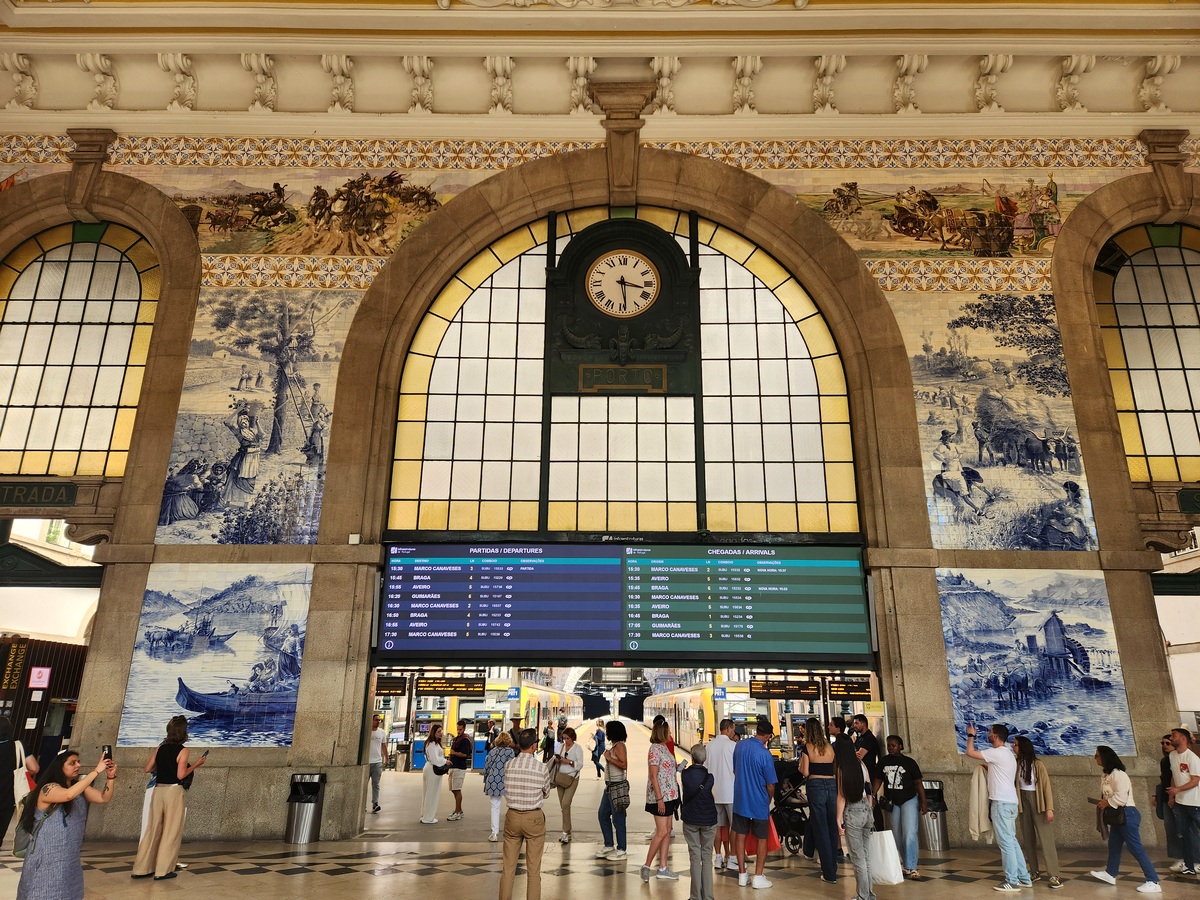
The impressive entry hall of the Sao Bento railway station, with large panels of azulejo tiles all around.
Fado in a Monasterio
Porto Guitarra also gave us a lead for an evening Fado performance at the Monasterio de São Bento da Vitoría the following evening.
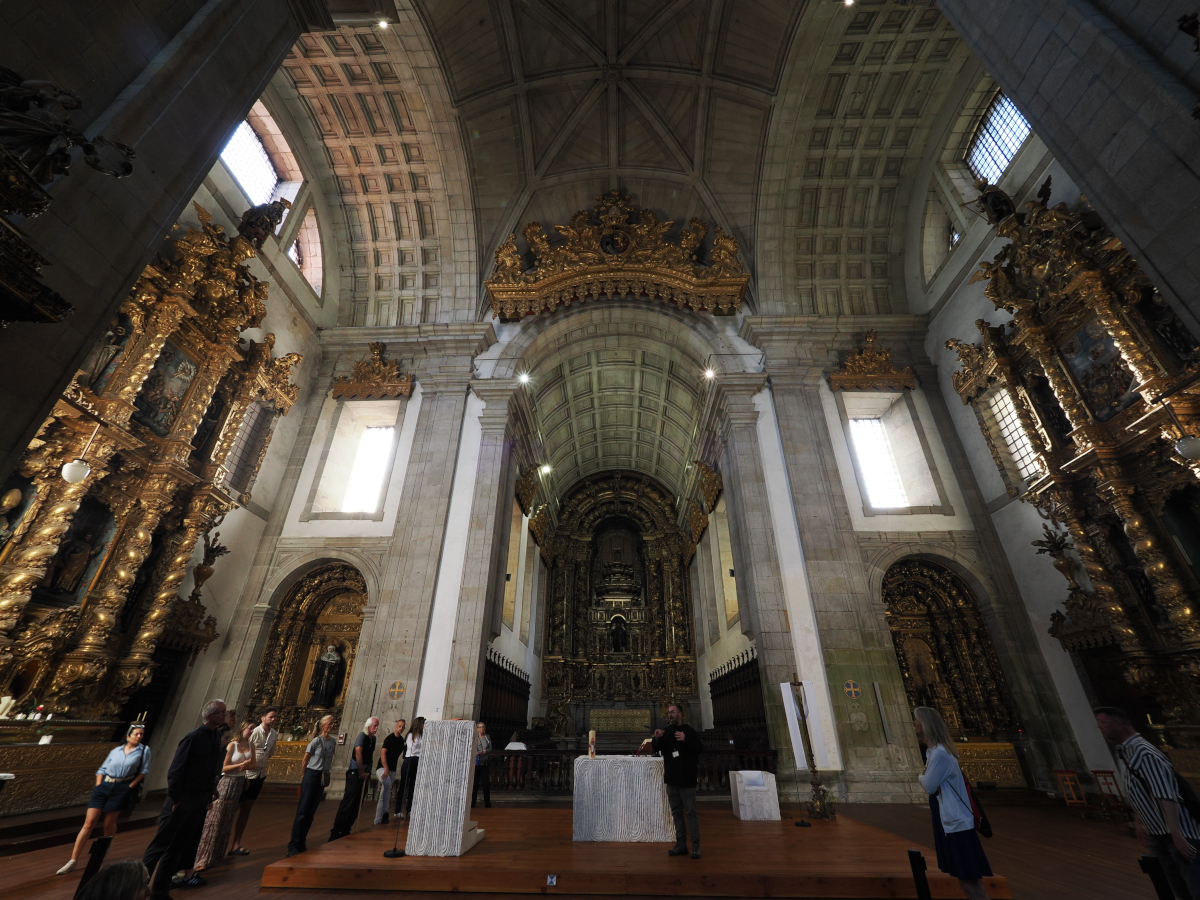
Inside São Bento da Vitoría monastery, with lots of shiny gold application in the various decorations.
This in turn gave us the opportunity for a private tour of the monastery and attached cathedral themselves as well as a chance to tuck into a few of the liquors that the monks had spent their moments of deeper contemplation developing. The liquors weren’t bad by liquor standards but despite their hallowed derivation they weren’t good enough to tempt us to make a purchase`.
The Monasterio
Meanwhile the cathedral itself was a simply splendid and absolutely dripping in gold and ornate carvings which stretched languidly from floor to vaulting roof.
More gilded wood-carved church decorations.
Interestingly, its late Renaissance architecture is offset by its quite distinct Baroque interior decoration (of course we noticed these details, maybe…). Happily too, there was a wonderful juxtaposition of Renaissance high-art and Modern tastelessness: off in one little alcove, under the faux pipe organ (there was an equally impressive real one on the other side), there resided yet another Virgin Mary and Baby Jesus statue buy this time with Mary sporting a rather fetching bright blue neon halo. Nice! and only ever so slightly bogan.
The two Renaissance pipe organs, and Mary with her neon halo. The left organ is fake but was installed for symmetry.
Anyway, the cathedral was the product of petty grievances between royalty and the clergy and then even pettier grievances between different branches of the clergy. I don’t know who or how many peoples’ lives in far flung corners of the Portuguese Empire were made miserable to produce the wealth that enabled this building but I am guessing that it was a lot.
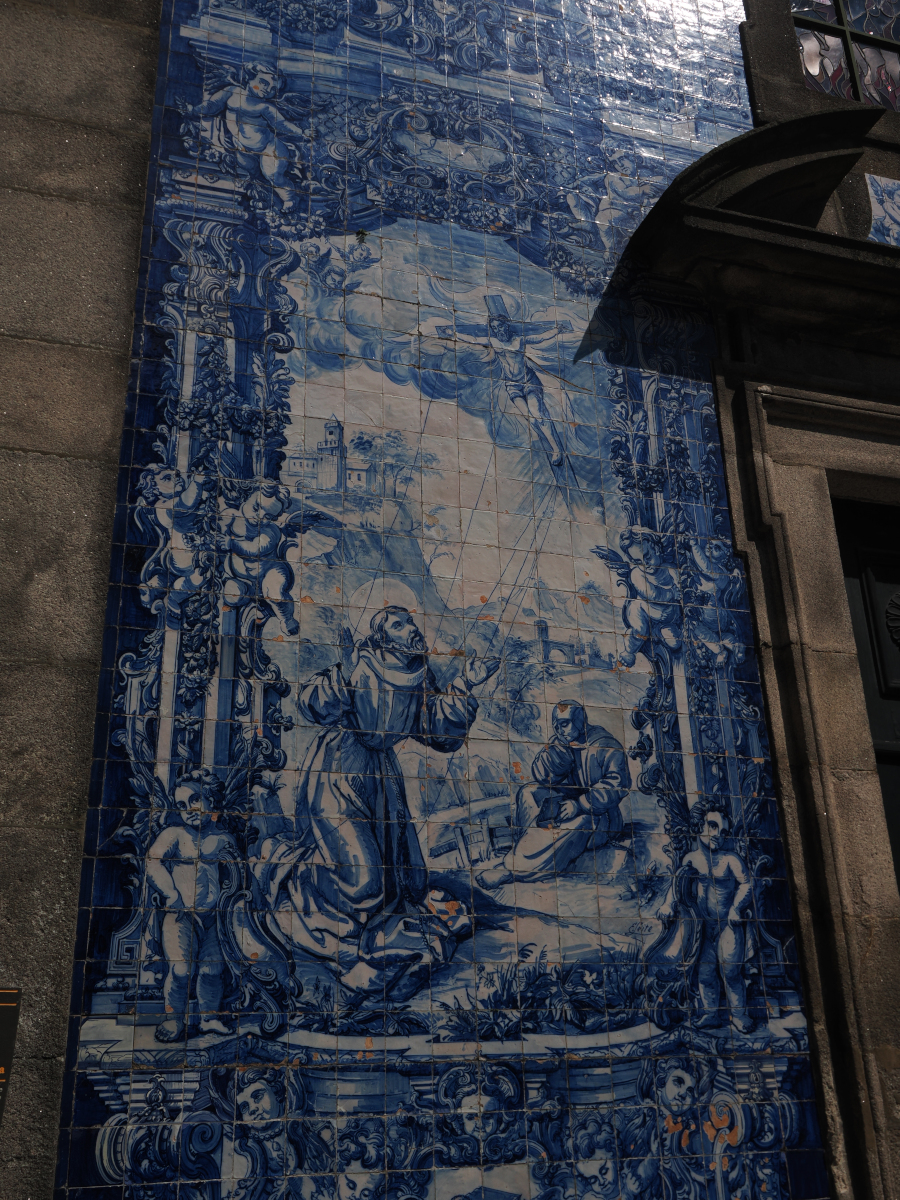
Monk flying a Jesus-kite?
The Fado
But we digress: we also got to hear a performance of fado that was a real treat. There was a fado guitarist providing rhythm and backing to a guitarra player who effortlessly played the most intricate melody lines over him with a fluttering three finger picking/flicking style.
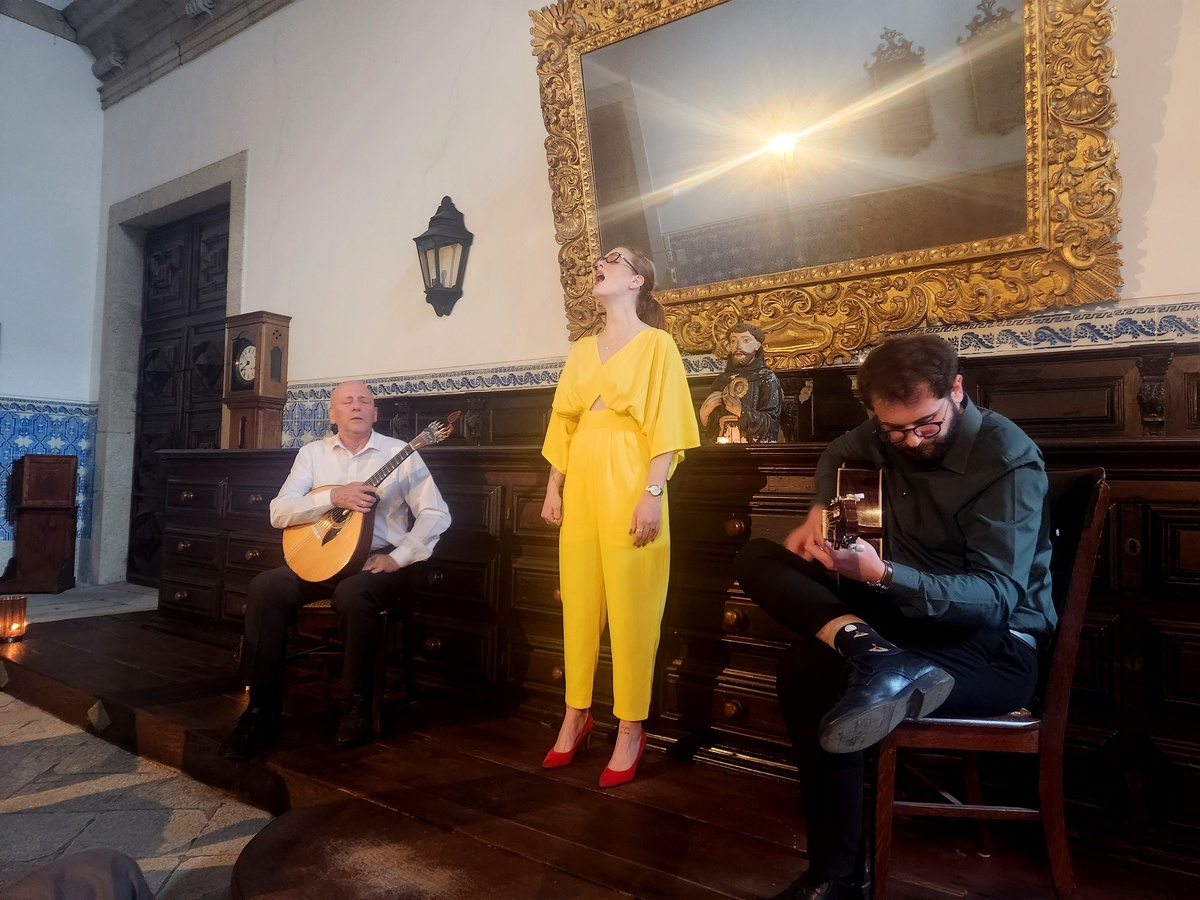
Beautiful Fado.
Soaring over these two was a strong soprano who I have no doubt could squeeze pure emotion out of rock. I have no idea what the songs were about but I would wager that she could sing a shopping list and bring you to tears. It was a grand evening which we wrapped up very appropriately by buying a pot of honey from the monks. Wild and crazy, huh!
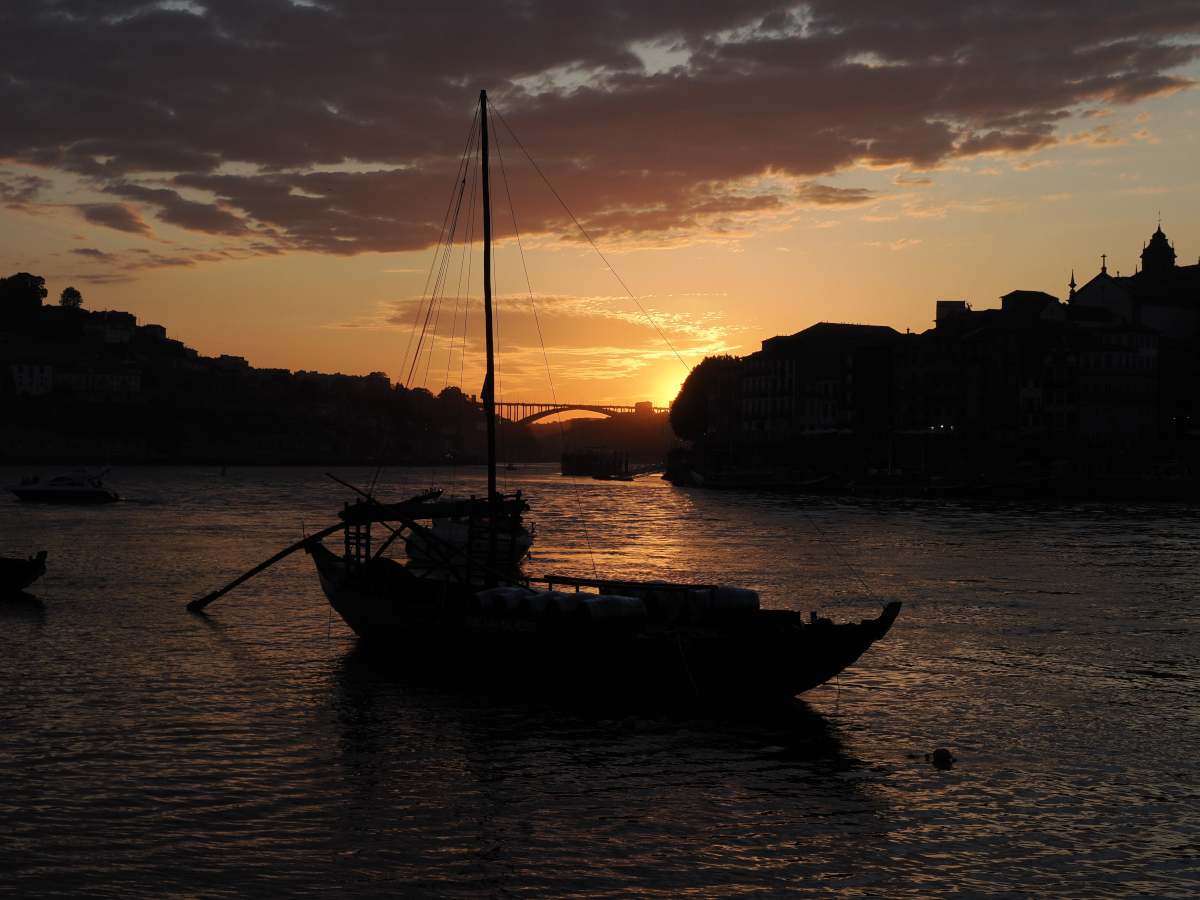
Gorgeous end to the day in Porto.
As a general hazard warning we should note that we went to Livraria Lello, billed as the most beautiful bookshop in the world. Don’t go, it is an Instagram place not a bookshop.
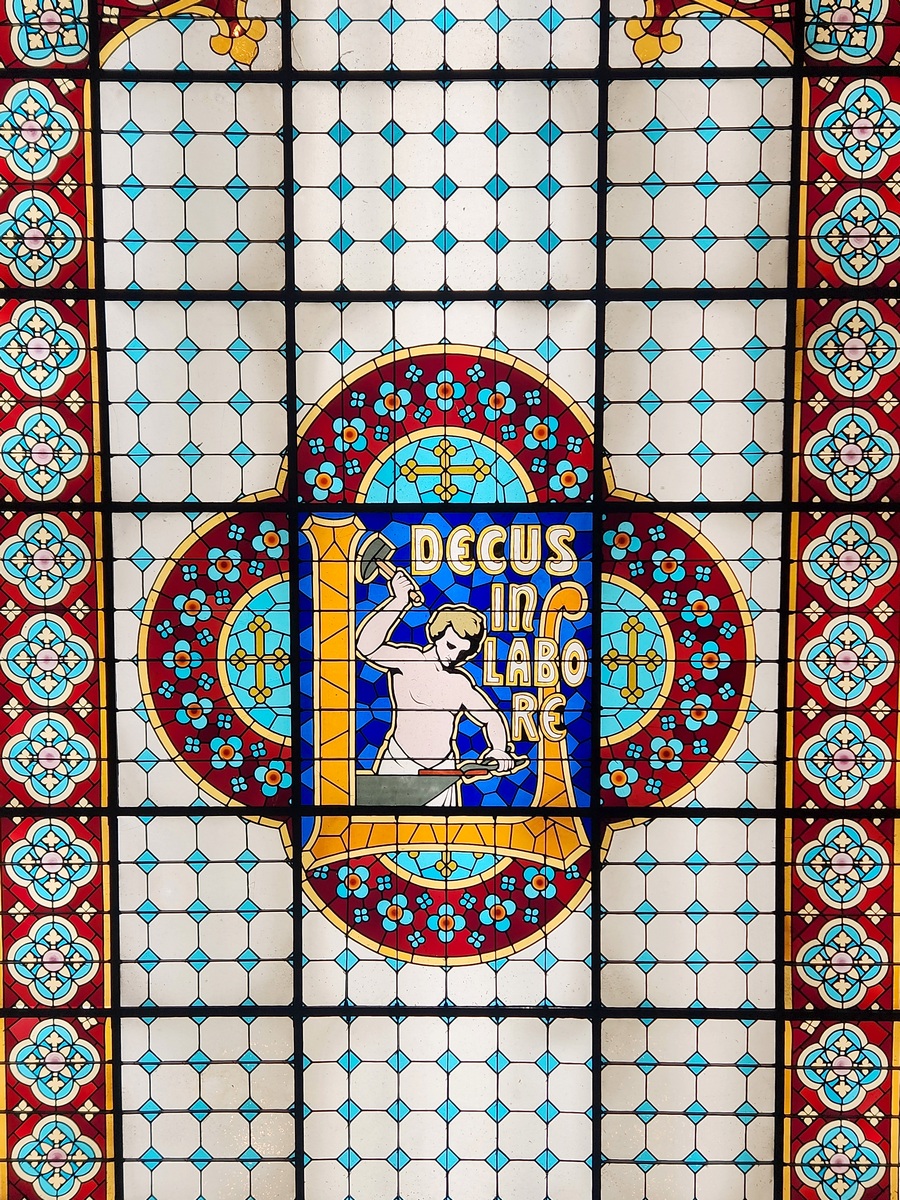
The only view worth viewing in the Livraria Lello – the ceiling.
There probably isn’t too much to say about the rest of our time wandering around Porto other than to say that it was very enjoyable with lovely, or quaint, or impressive views around nearly every corner.
Street scenes in Porto.
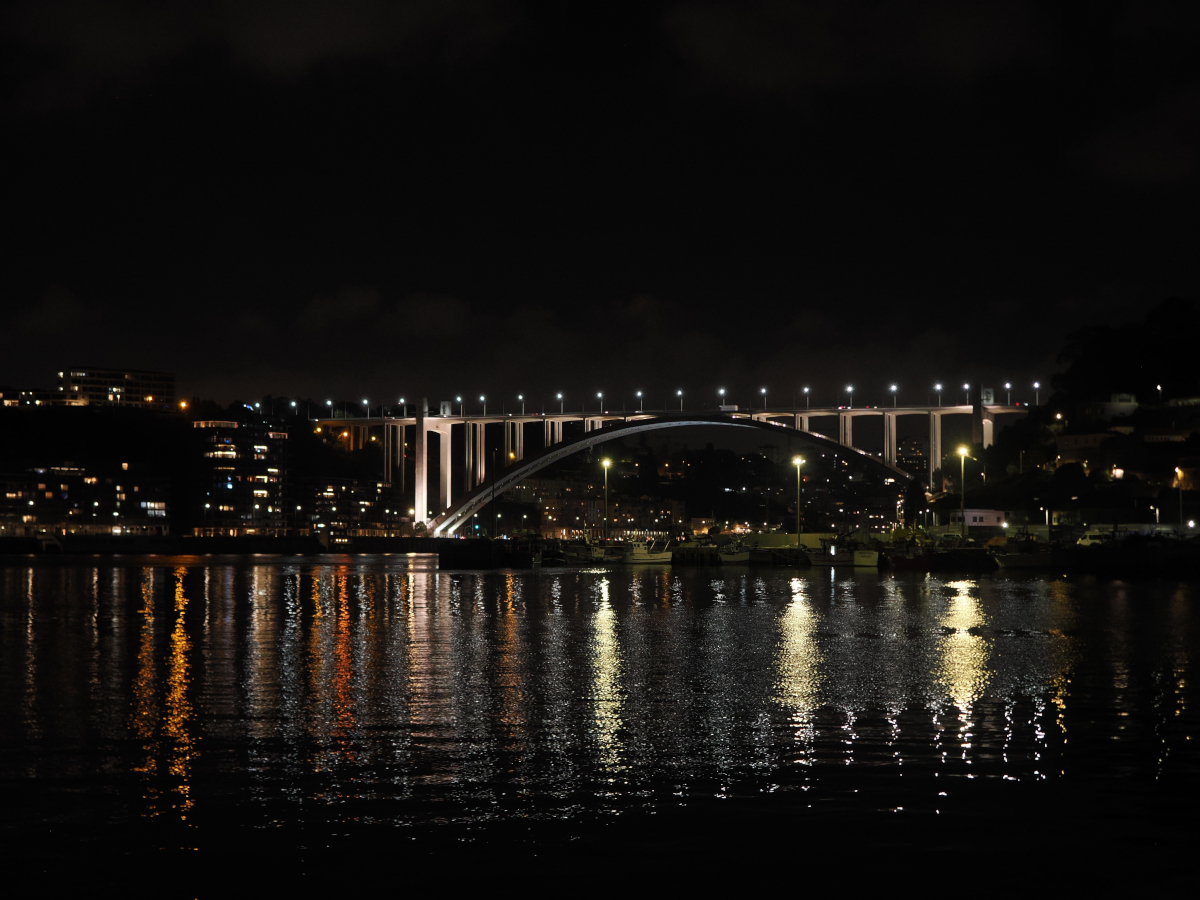

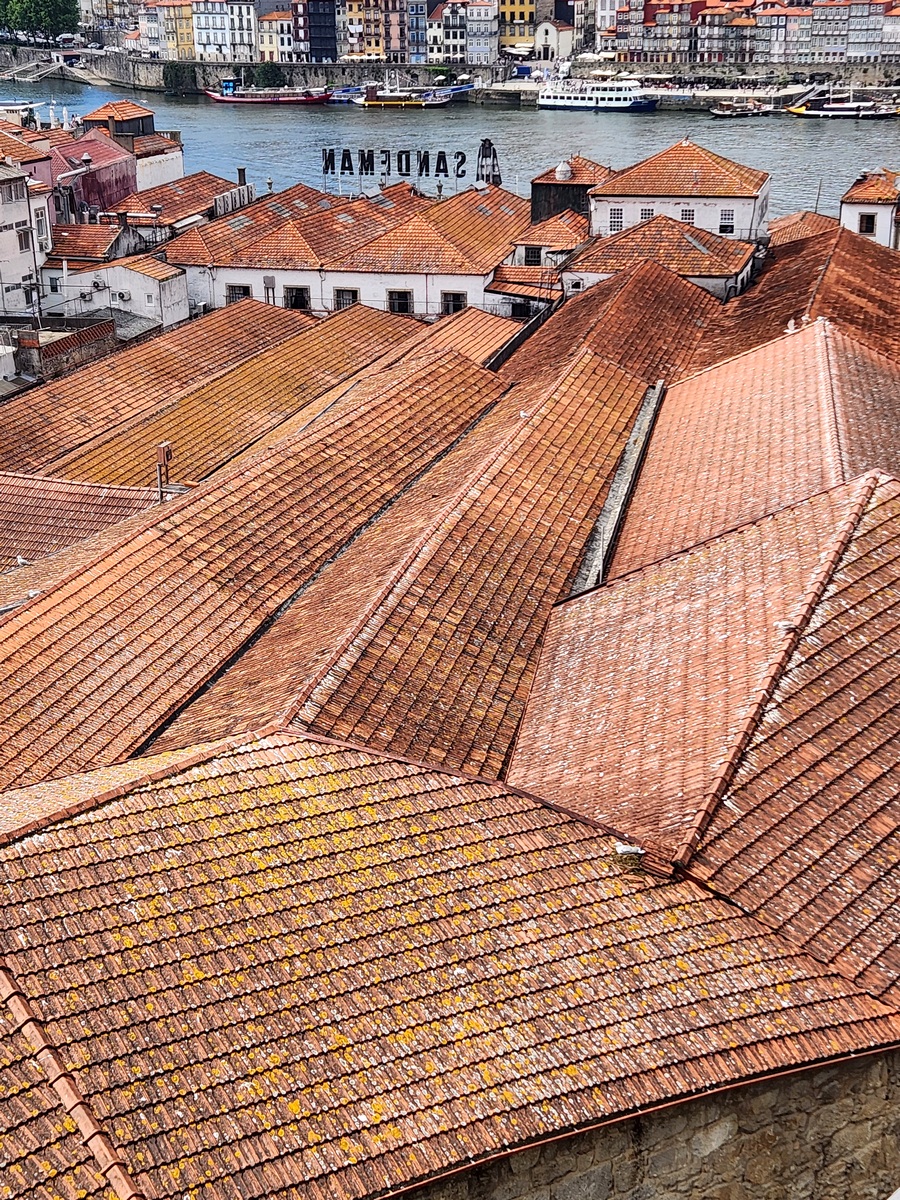
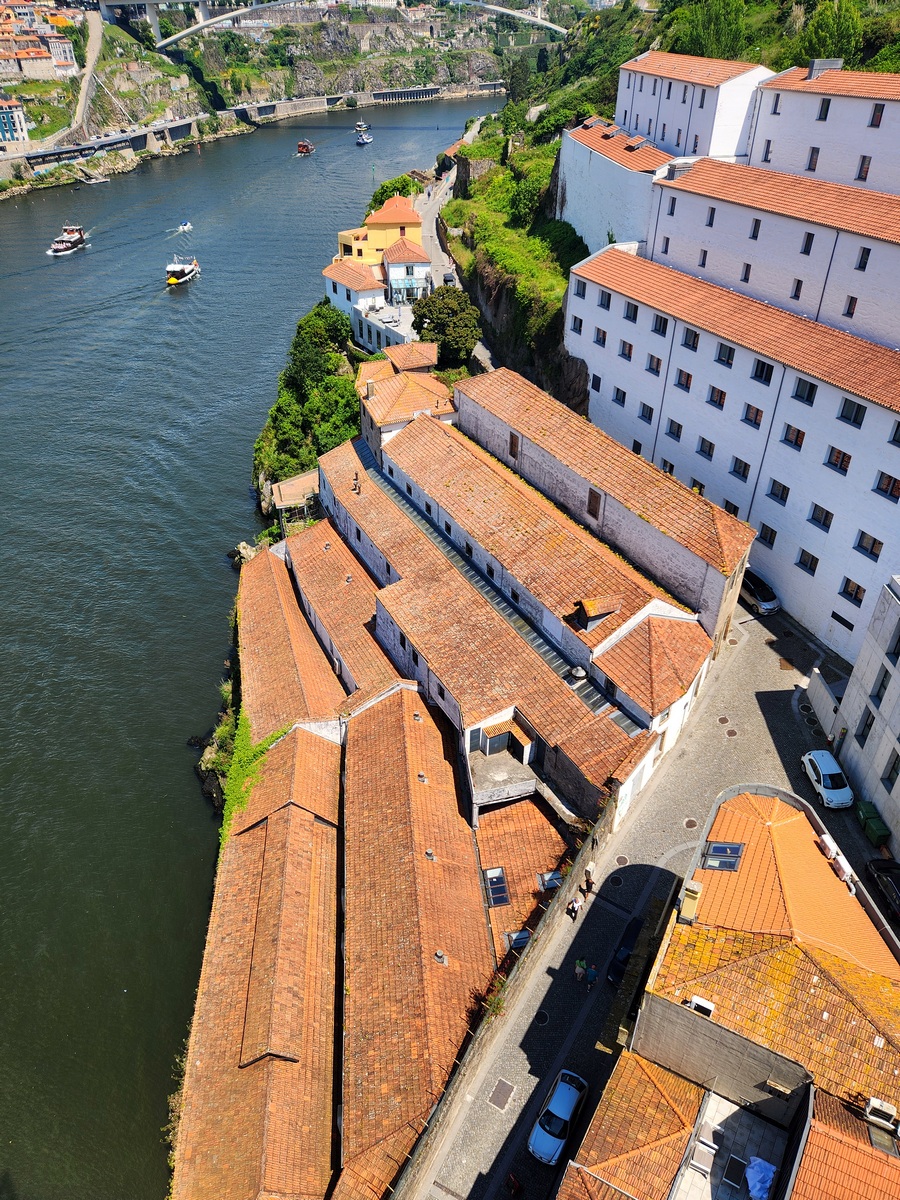
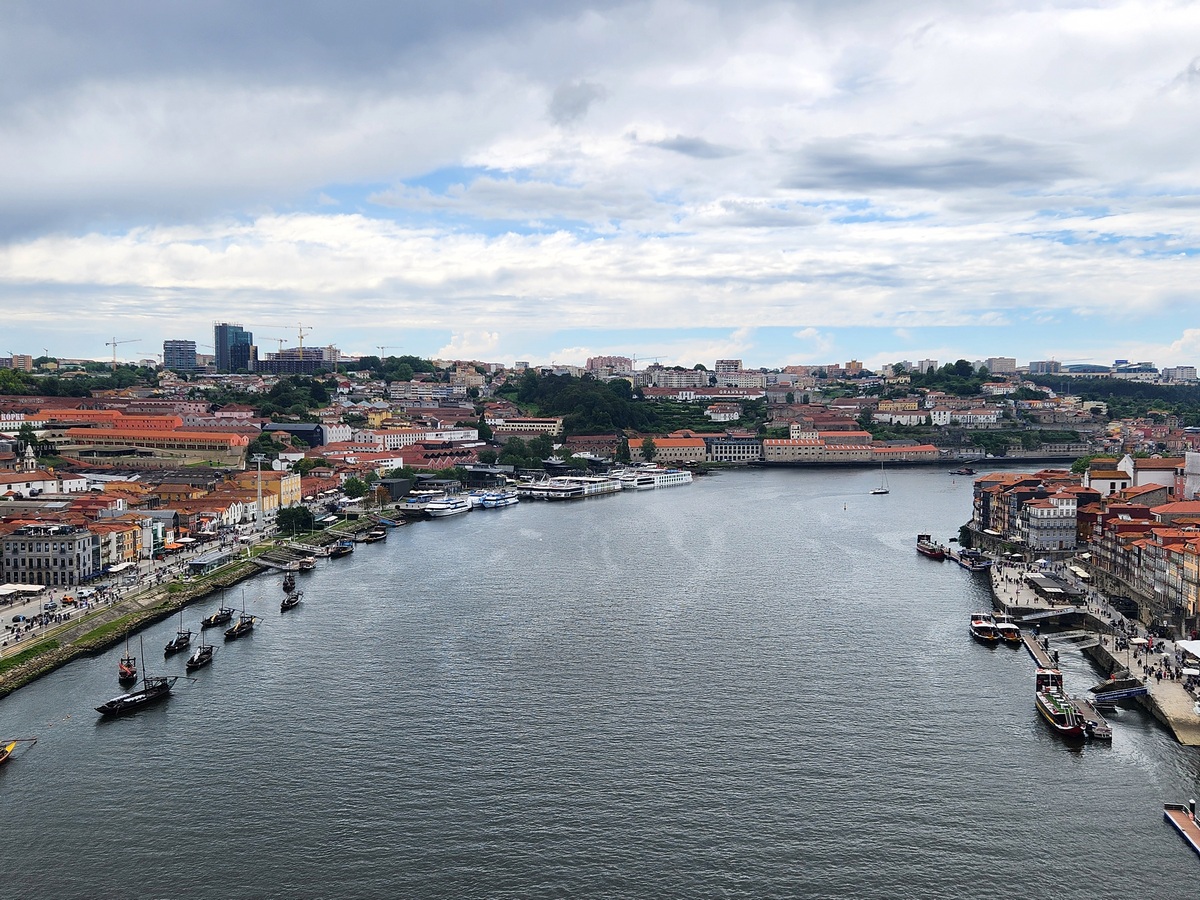
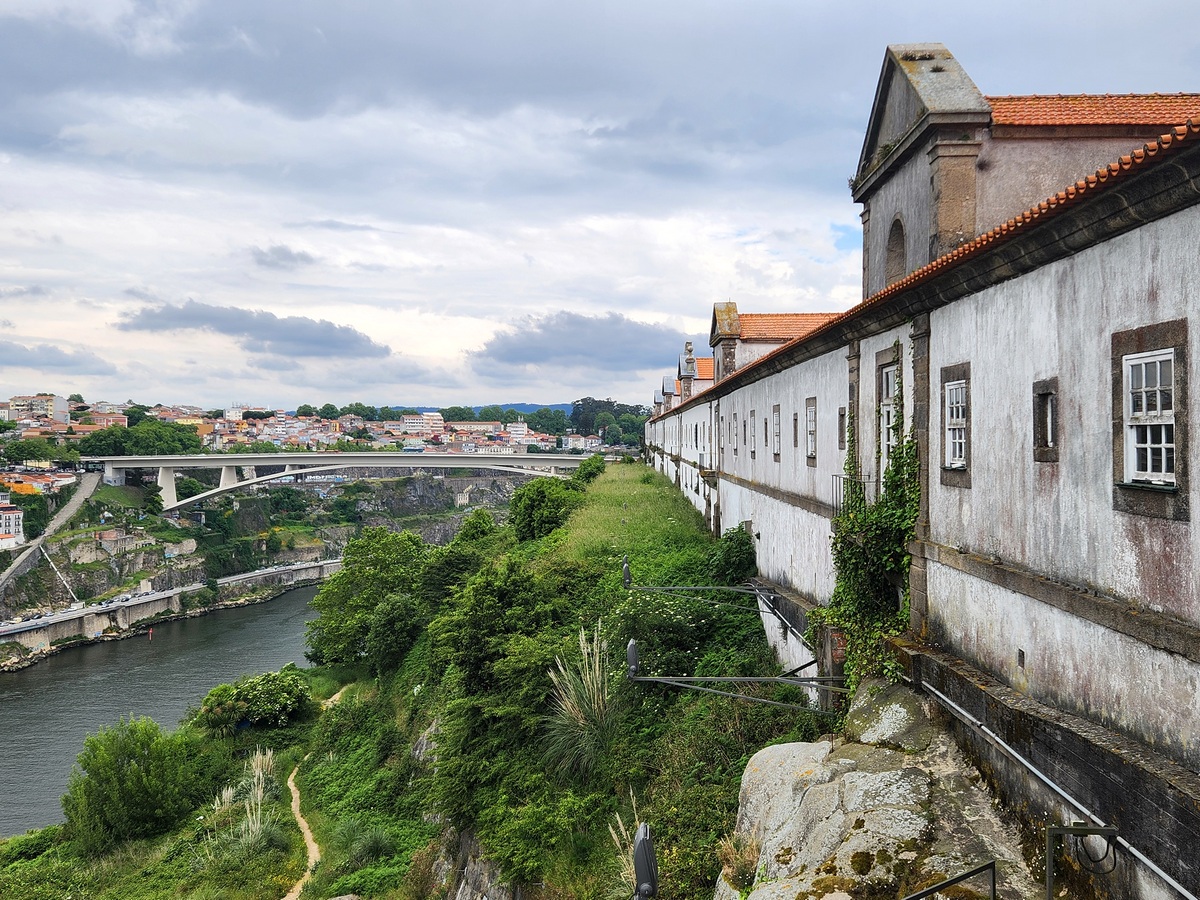
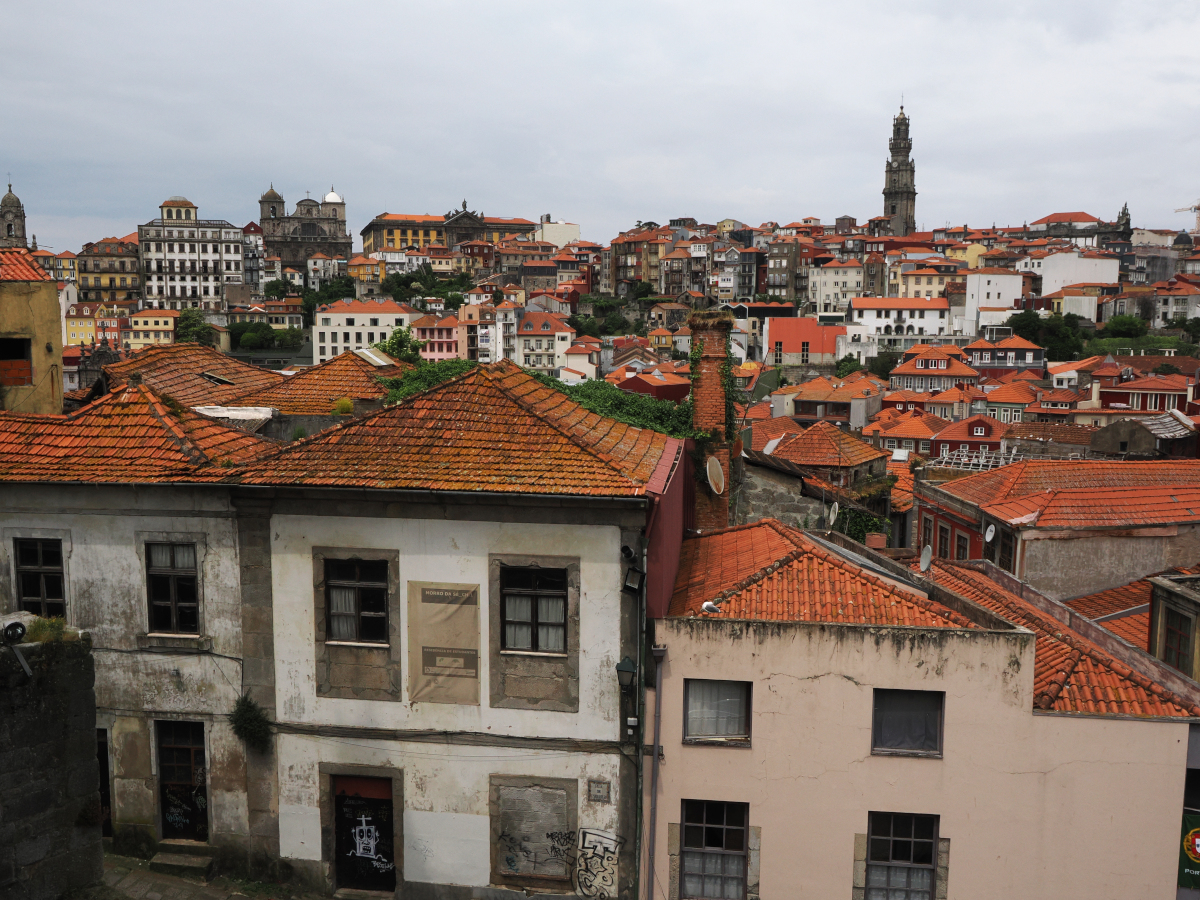
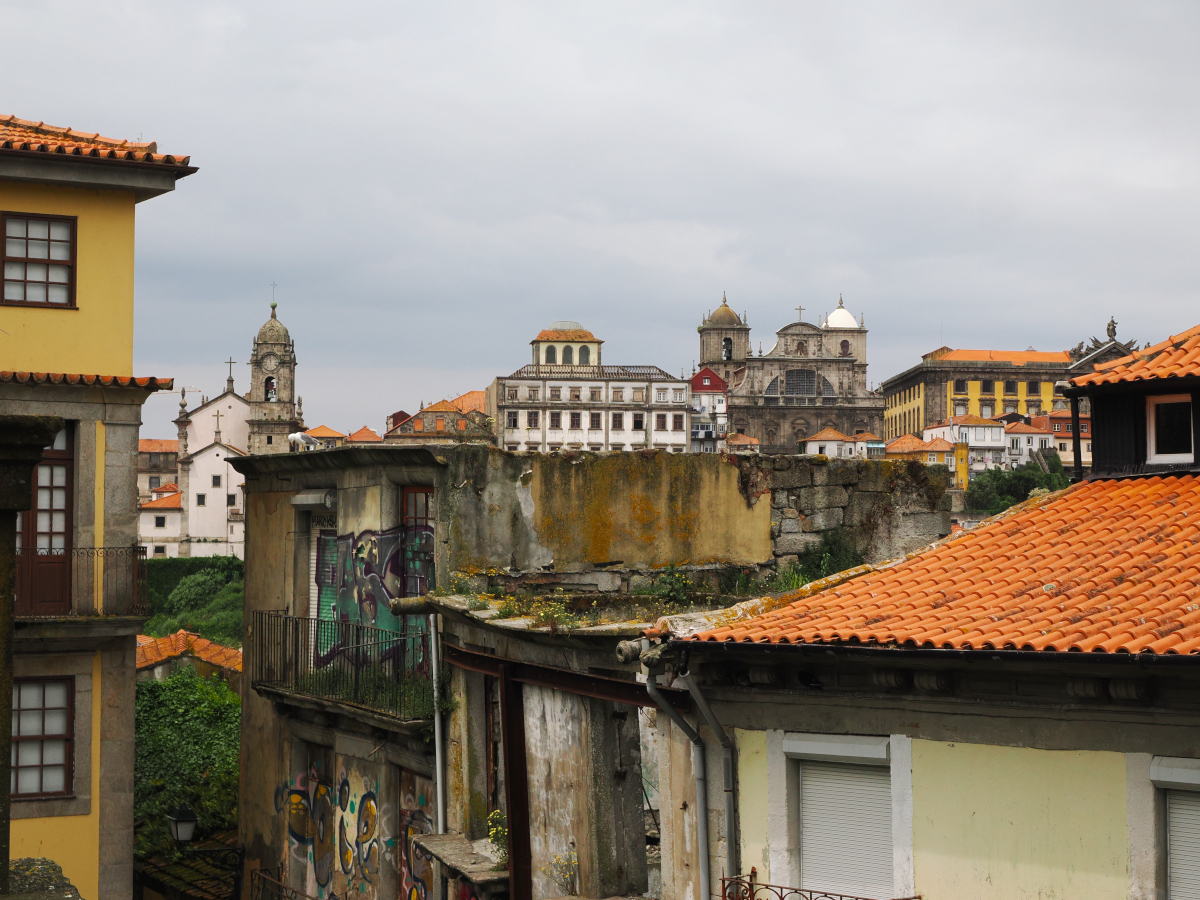
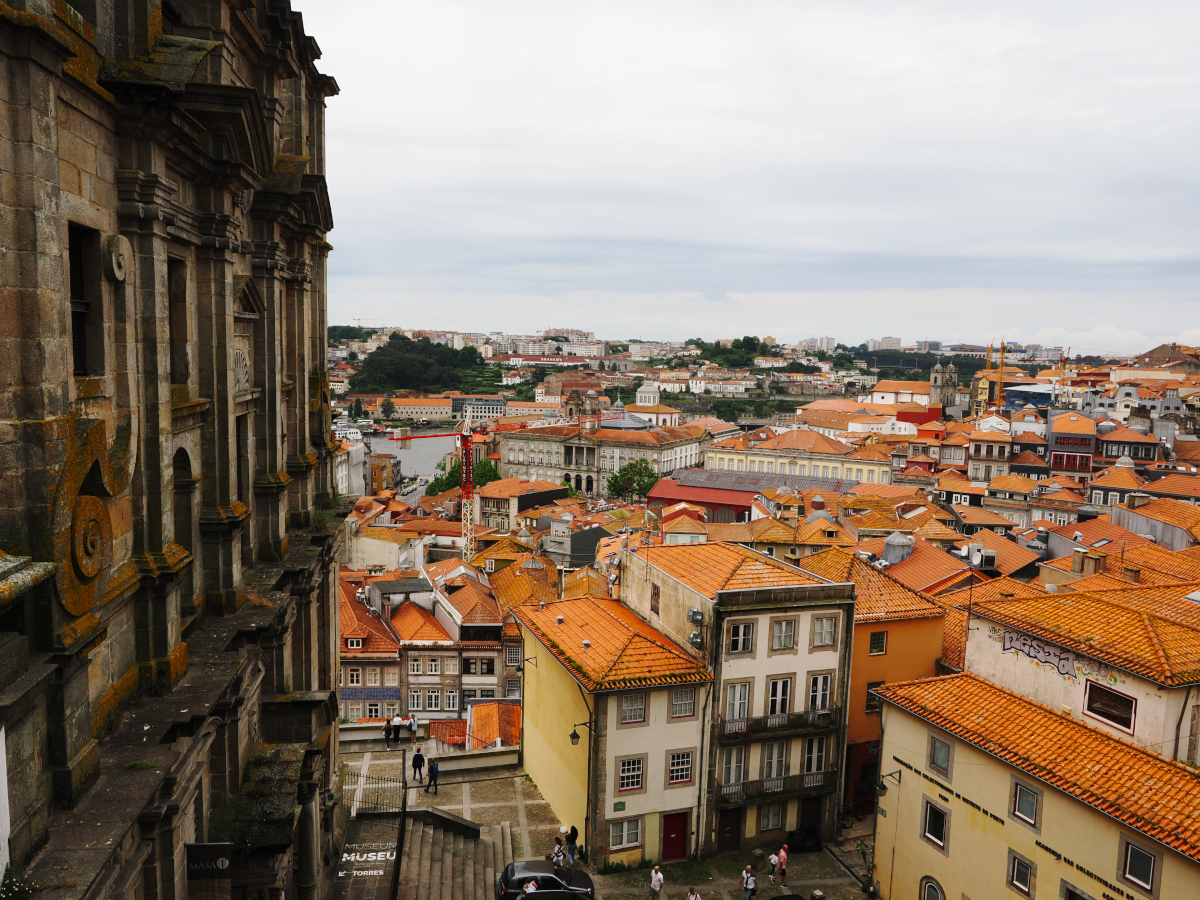
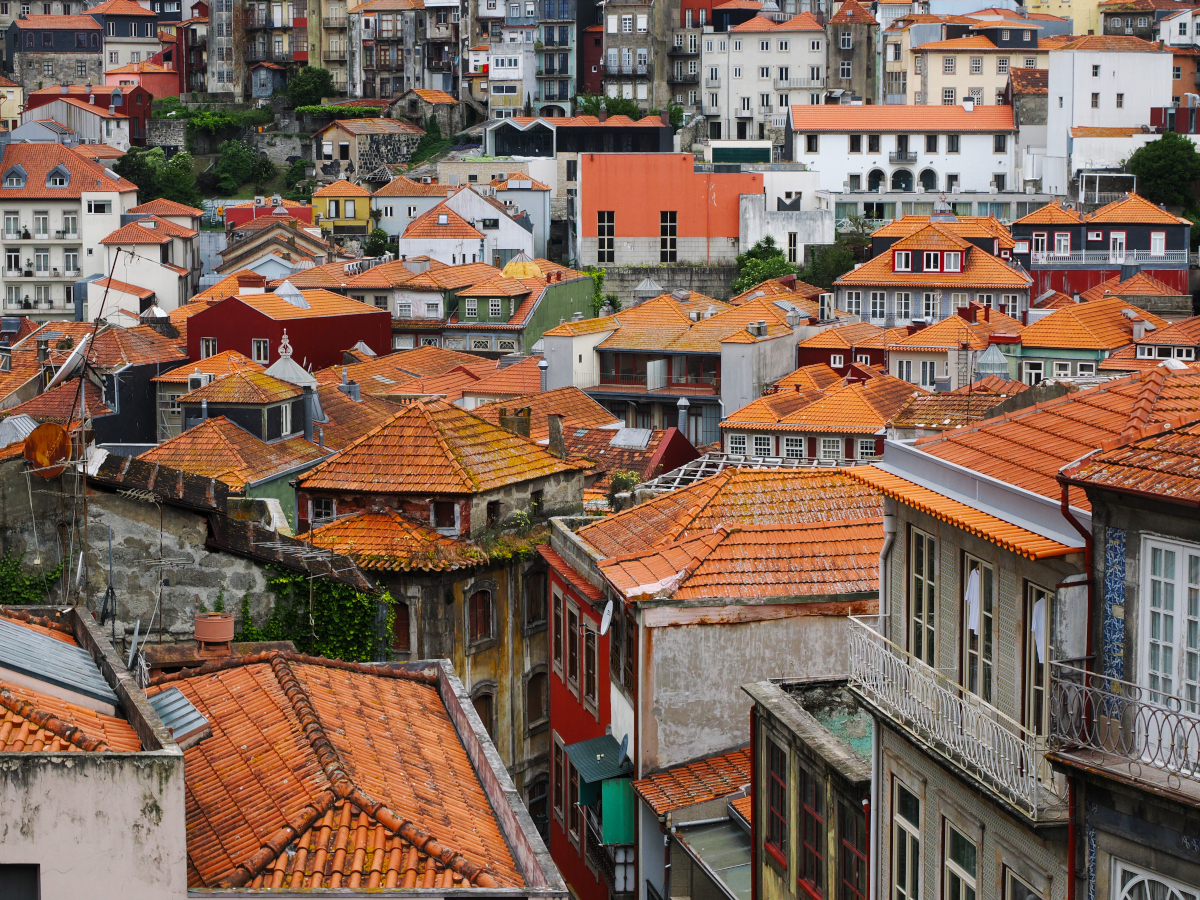
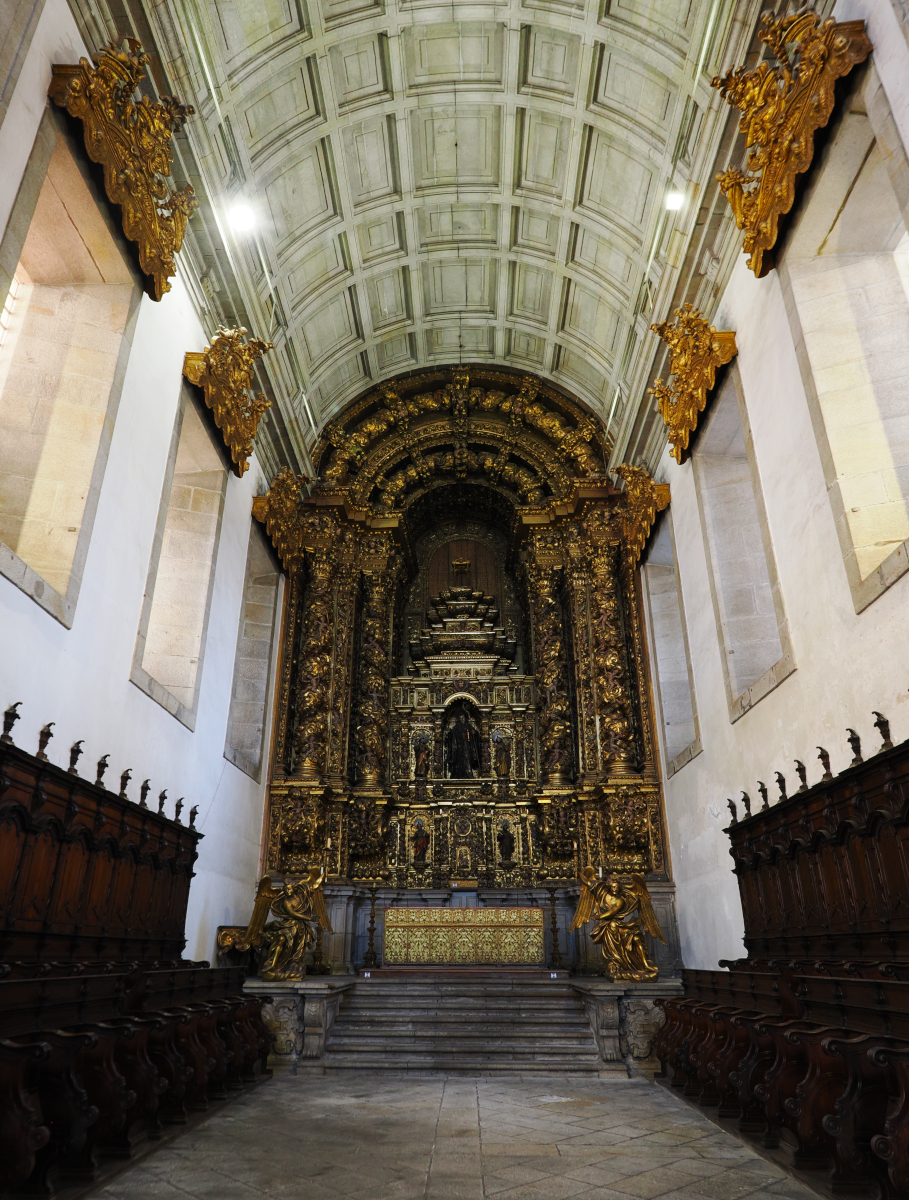
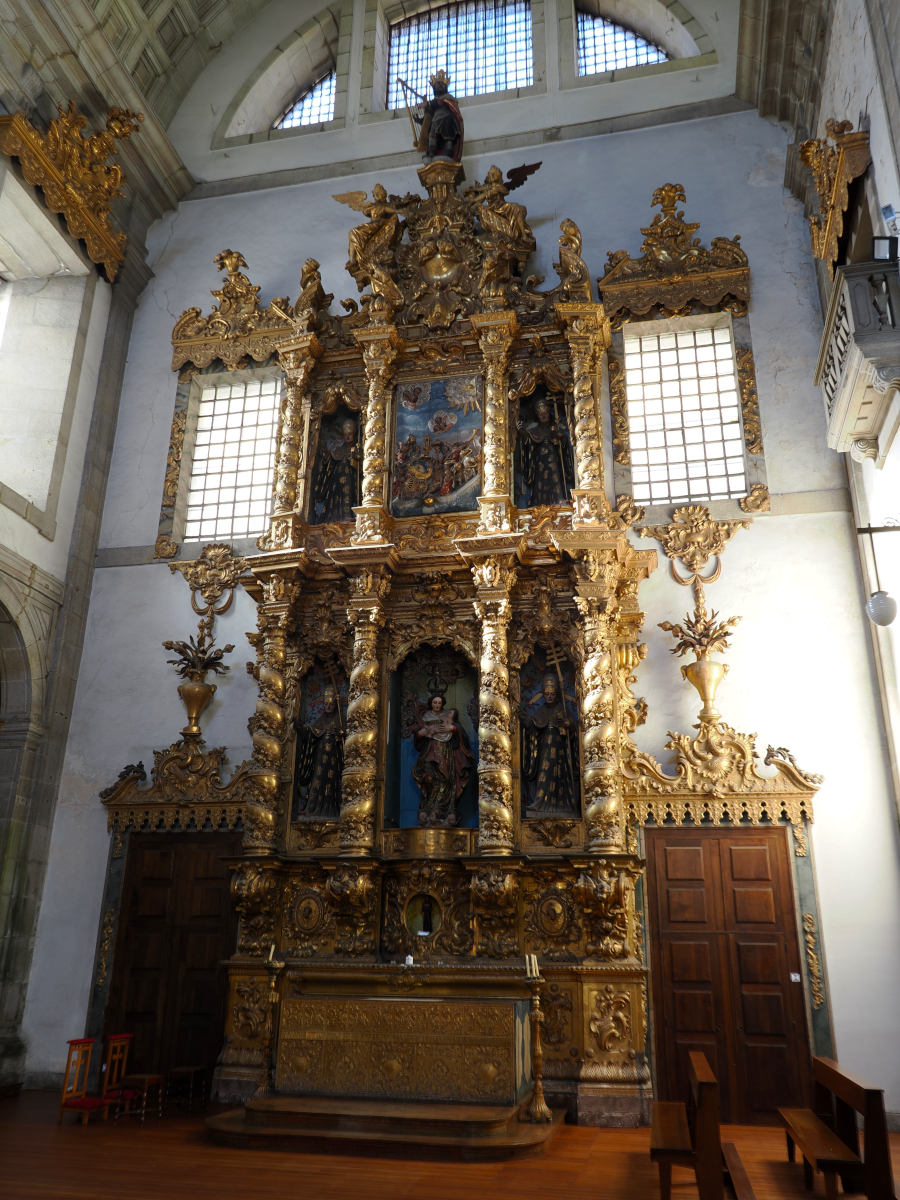
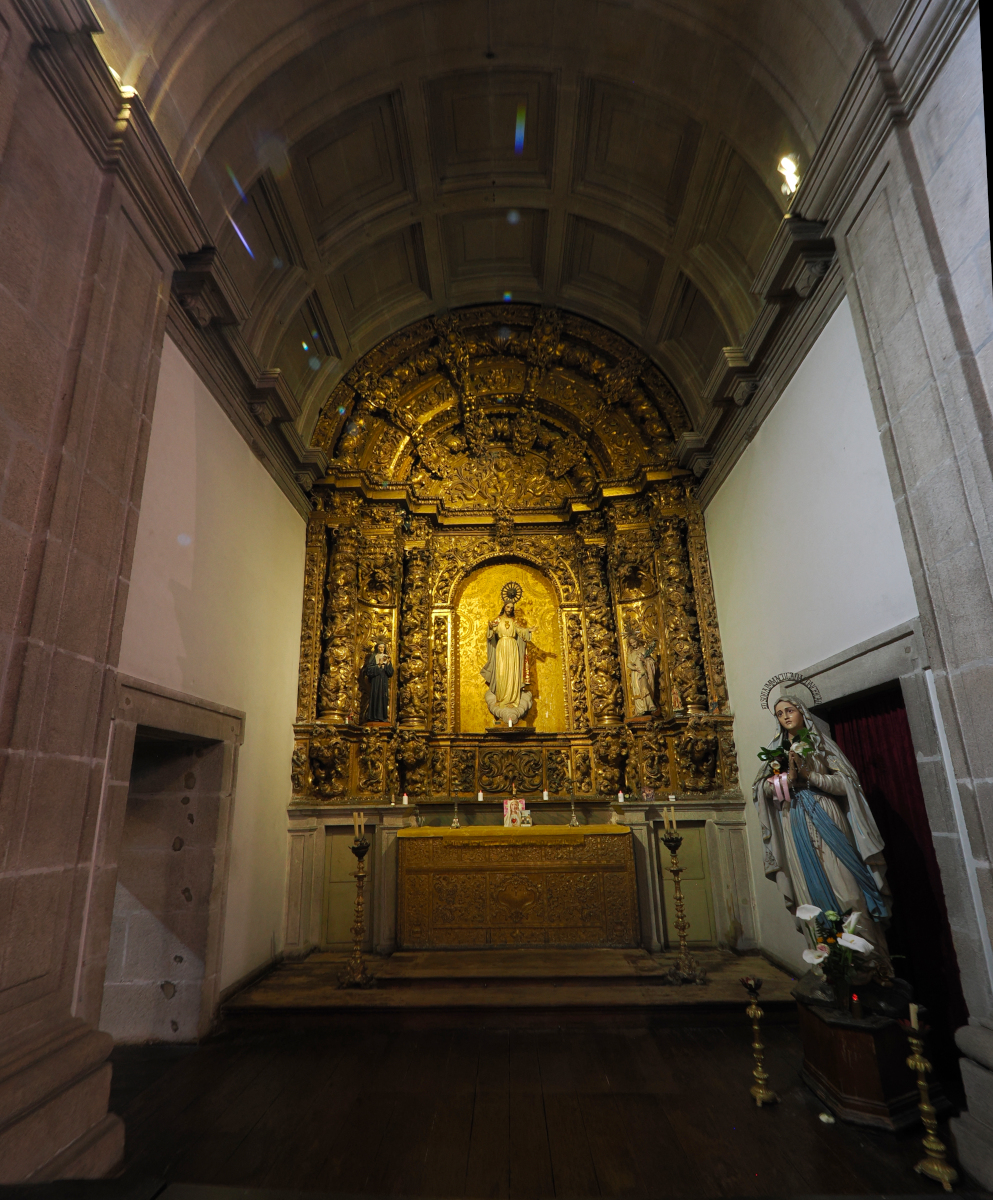
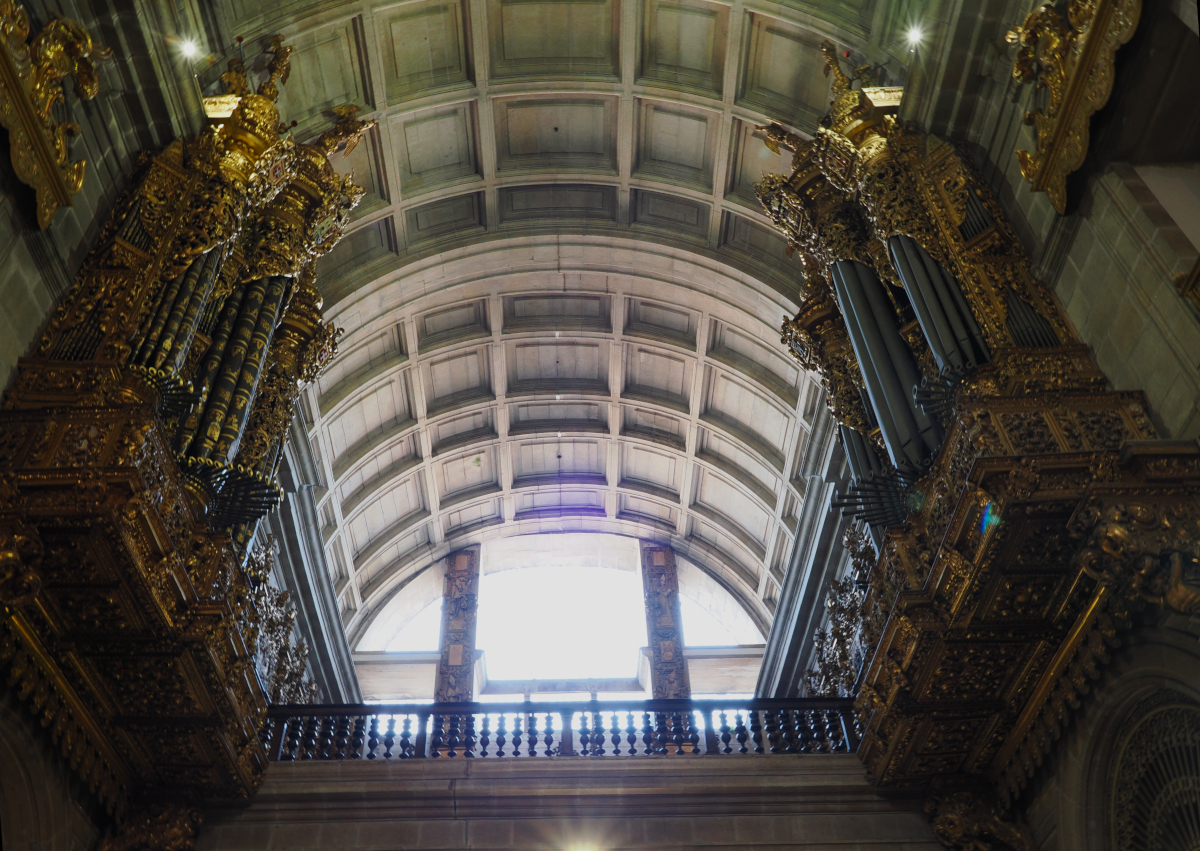
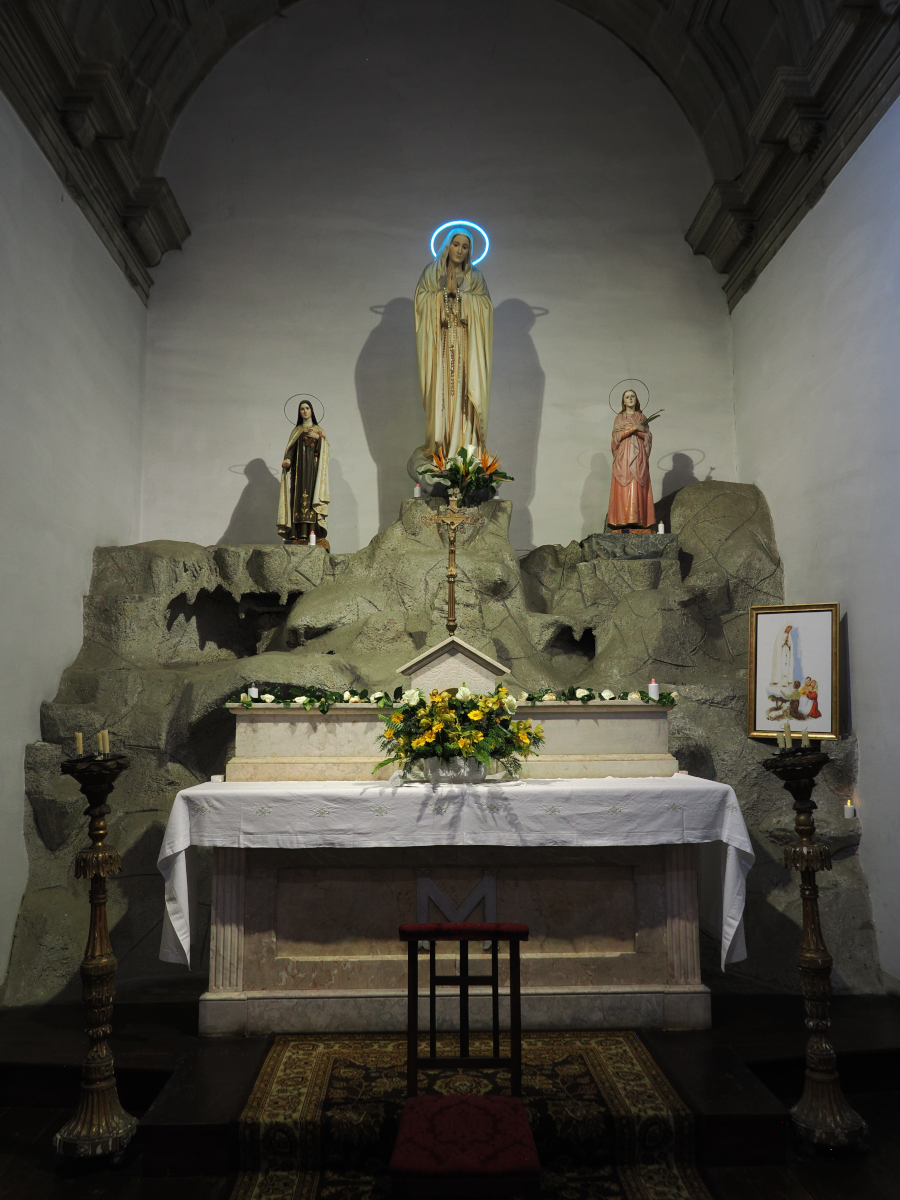
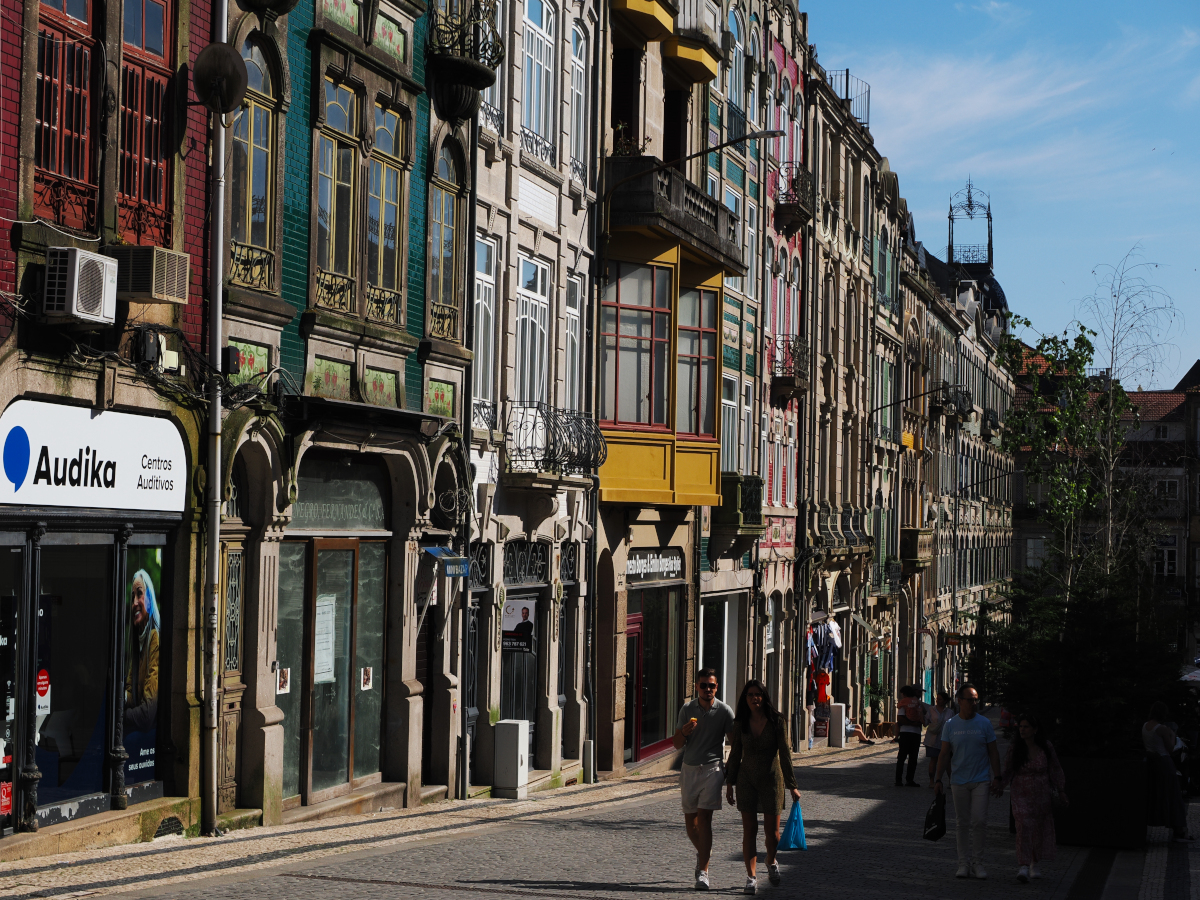
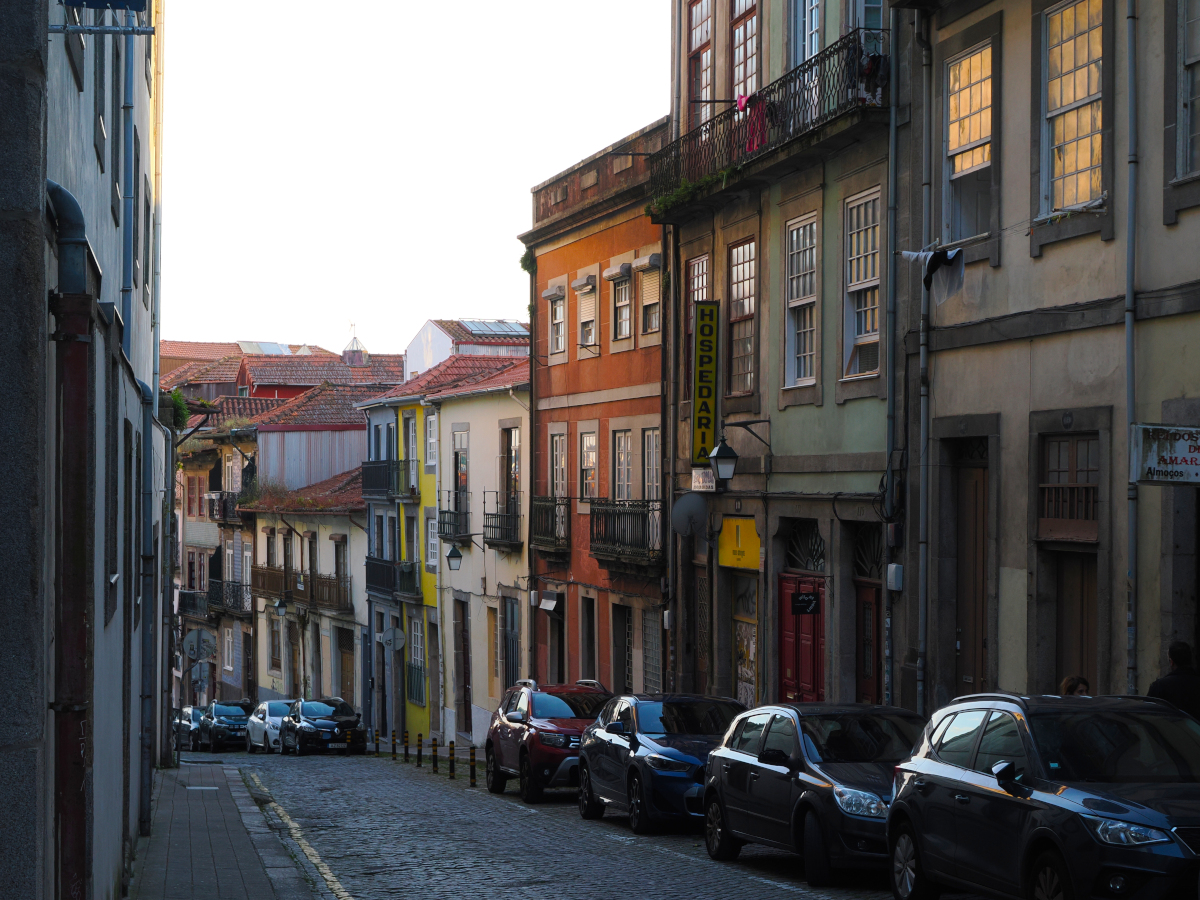


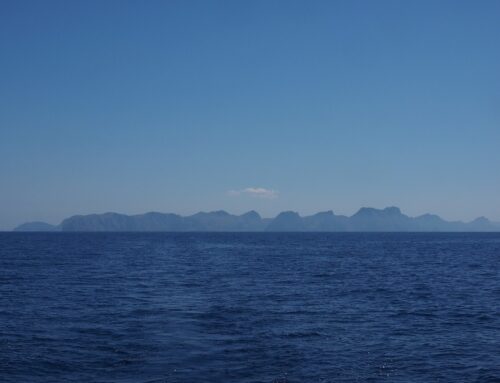

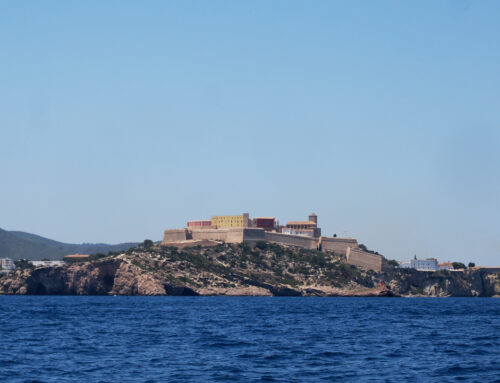
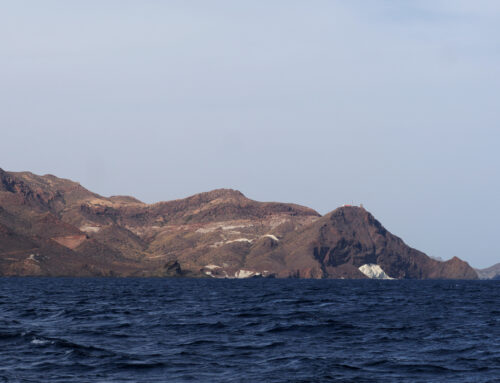
Blijft mooi Porto. Wil er eigenlijk ook wel weer eens heen.
Het is heel erg mooi, maar het is jammer genoeg ontzettend toeristisch. Een soort Portugees Disneyland, of Amsterdam op steroids. Helaas. Maar goed, daar waren wij natuurlijk ook onderdeel van.
Porto looks lovely – are there lots of the blue painted tiles (perhaps with more picturesque scenes than the above ‘flying a jesus kite’ 😂)
There are indeed many fully tiled facades. I happened to think that the Jesus Kite one was one of the more imaginative ones, but there were all manner of biblical and battle tales depicted, mostly on the sides of churches. Porto is really worth a visit to be sure.
I like the Jesus kite comment but prefer to think of it as portraying JC as a supernatural puppet master.
that interpretation occurred to us as well, Jim, but we decided to go with the more light-hearted interpretation. There is a darker version of the jesus-kite interpretation with the religious leaders controlling how the jesus -kite is perceived by the faithful but we won’t go there.
Fair comment David.